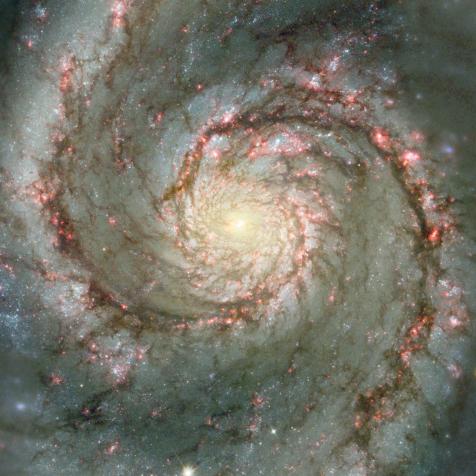
NASA
The Secrets of Jupiter’s Atmosphere…in 3D!

Jupiter is all sorts of wild.
You already know it as the biggest planet in the solar system. But it’s also the planet with the worst possible weather in the solar system.
NASA’s Juno probe has been orbiting the gas giant since 2016 and is on the last legs of its mission there. The problem is Jupiter’s massive magnetic field, which is often stronger than the magnetic field of the sun itself. That magnetic field traps charged particles traveling through space, forcing them to loop around the planet like a tiny little NASCAR race. But those charged particles wreak havoc on electronics, and Juno won’t last much longer.
In the meantime, astronomers will use Juno’s suite of instruments to study as much of the mysterious world as they can. They are using onboard infrared telescopes - like heat vision but for astronomy – to monitor sources of energy deep below the cloud tops. They are carefully watching the way that Jupiter tugs on the spacecraft with its massive gravity, building a map of the interior. They are sensing that powerful magnetic field and the changes and ripples within it to get a sense of what’s happening to charged particles under the surface.

International Gemini Observatory/NOIRLab/NSF/AURA/NASA/ESA, M.H. Wong and I. de Pater (UC Berkeley) et al.
Jupiter’s banded appearance is created by the cloud-forming “weather layer.”
They are finding that the storms on Jupiter have deep roots.
Take the Great Red Spot, a single hurricane that has been blowing for at least a few centuries. The entire storm is wider than the planet Earth, and with Juno, astronomers have discovered that it is at least 300 miles deep.
That’s deeper than the clouds, deeper than layers of hazy water vapor; so deep that sunlight never reaches those depths. The fact that the storm has roots there is surprising, and a complete reversal of how storms get their energy on Earth. Here on our planet, sunlight is the ultimate driver of our atmospheric circulation and storm systems. On Jupiter, the source of energy is coming from much below the atmosphere, probably as heat retained from the formation of the giant world.

JunoCam Image data: NASA/JPL-Caltech/SwRI/MSSS; JunoCam Image processing by Kevin M. Gill (CC BY); Earth Image: NASA
This illustration combines an image of Jupiter with a composite image of Earth to depict the size and depth of Jupiter’s Great Red Spot.
The Juno team has also discovered sets of cyclones at each pole. In the north, eight Texas-sized storms dance together in the shape of an octagon. In the south, five storms create a pentagonal arrangement.
The team got to watch as a sixth storm attempted to join the party in the south, only for it to fade in a matter of months.
What’s obvious is that what we see on the topmost layers of the Jovian atmosphere is only the beginning. The real action is in the deep interior, where the hydrogen gas transforms itself under extreme pressures. There, a few thousand miles down, it behaves more like a liquid. Deepest of all there is likely a rocky core many times more massive than the Earth, but that’s only a guess – even the sophisticated instruments onboard Juno can’t probe that deeply.
Dive Deeper into the Cosmos
Journey Through the Cosmos in an All-New Season of How the Universe Works
The new season premieres on Science Channel and streams on discovery+.




















